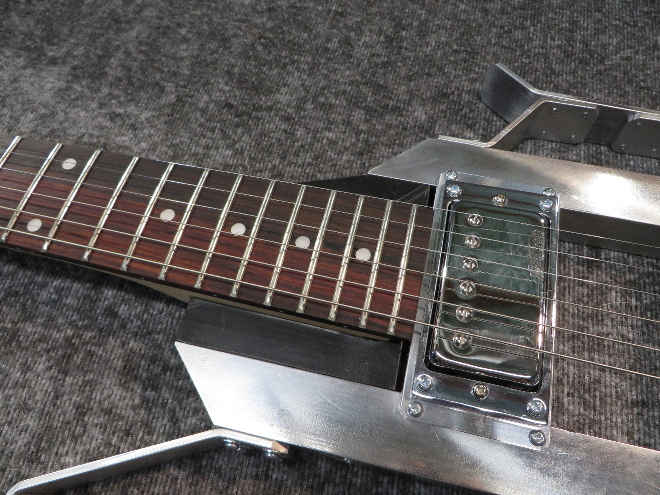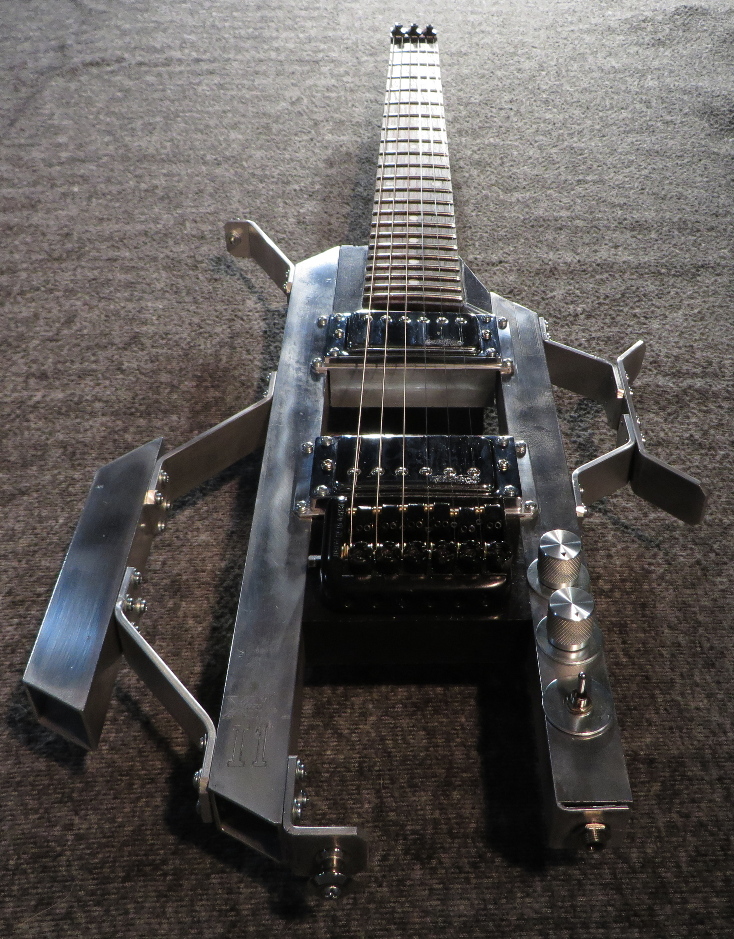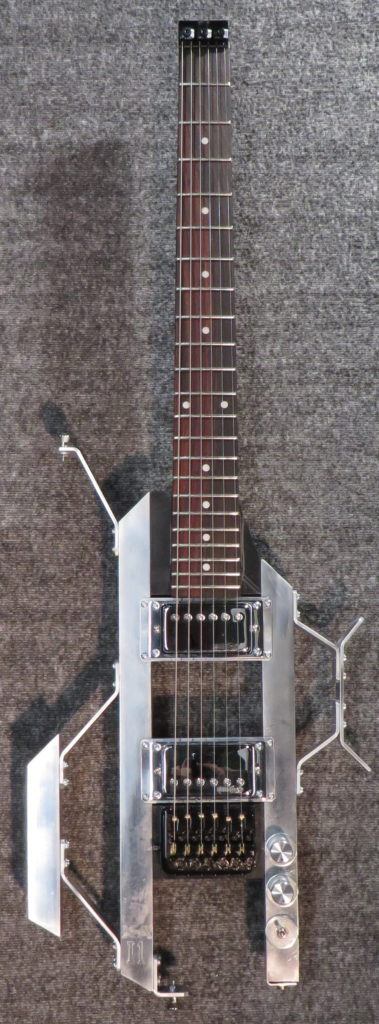The Concept
we wondered one day…
We wondered one day, while hanging a heavy 6-sting on the wall, just what does a solid guitar body do? The acoustic next to it we understand has a big body to provide a resonant chamber full of air. It just seemed like on the solid body electric there was a lot of dead weight there, not adding to the sound of the instrument.
We got it down to this list:
– Holds neck and bridge and pickups in relative position, (This one is important!)
– Houses electronics,
– Positions output jack,
– Puts strap buttons in (hopefully) useful locations,
– Provides a leg rest for seated playing,
– Look cool.
These are the ‘positive’ functions. The ‘negative’ functions include offering access to the higher frets, which requires a cutout, and sometimes clearing the strumming arm with a taper on the top edge.

To handle all these jobs, which are usually spread out around the instrument, a single big solid chunk of material is the easiest and cheapest way to do it. Ok, cool, but you wind up with an instrument that could also serve as a bad sledgehammer or passable melee weapon.
We started over from scratch with a stubbornly simple concept:
Build a guitar with the absolute minimum. Then add functions one at a time with discrete parts.
The result is the I1, which could be set up as a headless ‘stick’ guitar, or used as is comes with all the trimmings. With old-fashioned mechanical know-how and attention to detail the result is an superbly playable and controllable instrument with unique and wide-ranging tone.

A word (or more) on tone:
The sound from an electric guitar is what comes out of the electrical output jack. It comes from motion of metal strings in front of the magnetic pickups and FROM NO WHERE ELSE. Everything you think about as affecting the ‘tone’ or ‘warmth’ or ‘color’ of an electric guitar is, if it means anything at all, exclusively related to making the strings and/or pickups move relative to each other. The possible vibration modes in a thick solid guitar body are all way beyond human hearing if not the response bands of the pickups themselves. A solid wood guitar body stiff enough to do its job is too stiff to alter the sound.
A popular Youtube video dug into this in great detail:
So where do we think the I1 gets its own tone? While made mostly of metal, our guitar is not solid. The parts are thin and long and with a good strum you can actually feel them resonate. Also there are pockets of air, in the tubes and under each pickup, just big enough to set up acoustic wavy goodness. Watch for video and audio clips of the I1 in action to hear it for your self.


